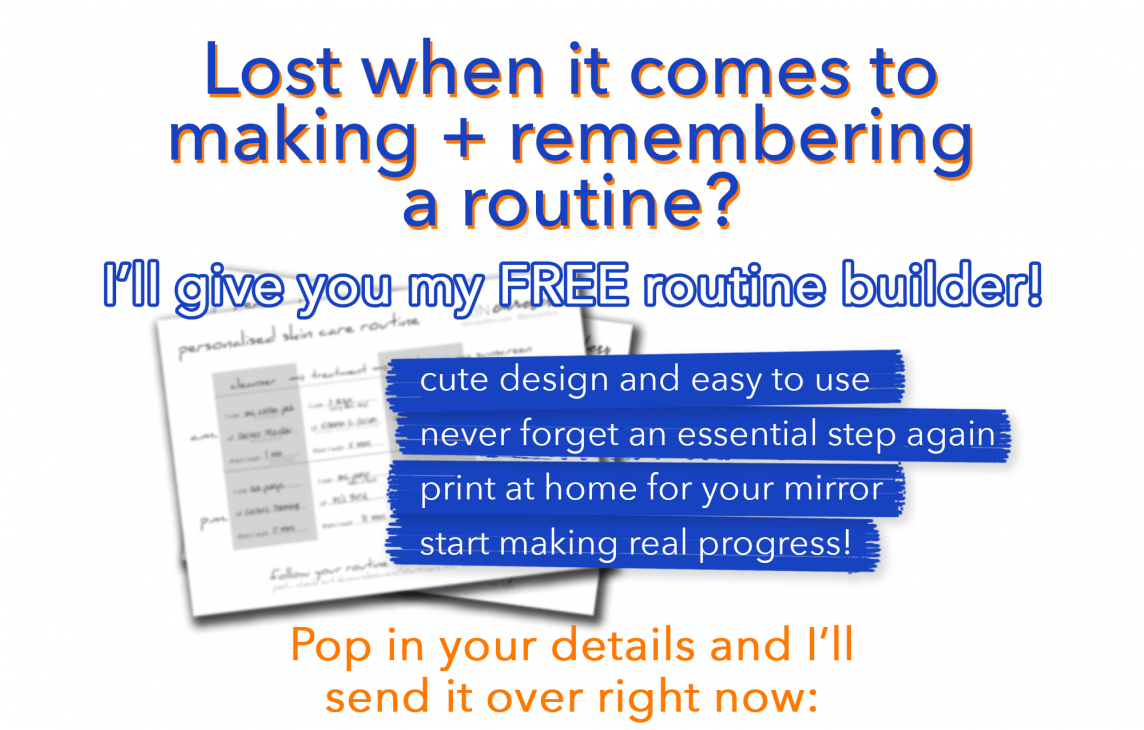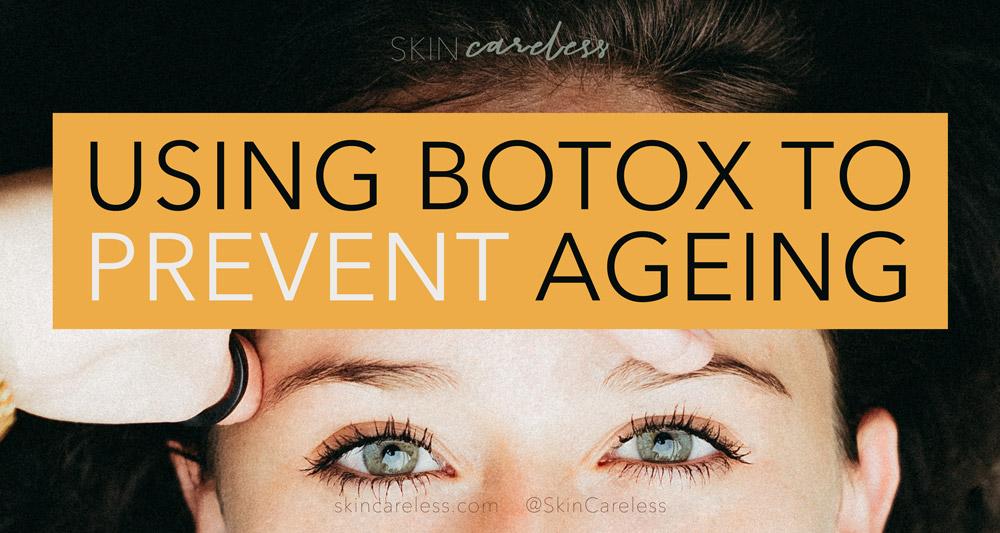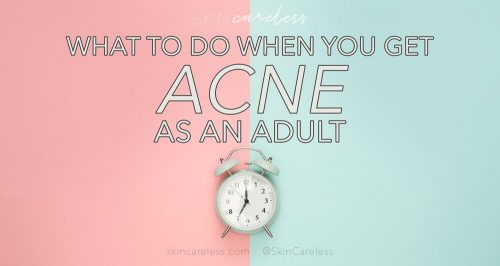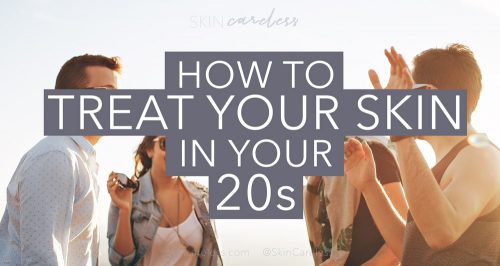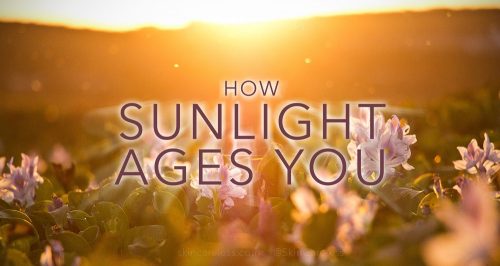If even the mere mention of botox brings to mind images of frozen-faced housewives with waxy foreheads, then you’re not alone. You’d be forgiven for saying “not for me, thanks” to the concept of traditional botox and turning it down.
Now, I’m only young, but I stil make a LOT of facial expressions and smile and laugh. Maybe too much. And though I take fantastic care of my skin, that movement is slowly starting to show as fine lines.
And like most people I want to look young, well, forever. While you can stave off fine lines in your 20s with great products that hydrate and protect, there’s only so much you can do to stop wrinkles eventually creeping up on you, right? So getting botox one day has been lingering at the back of my mind.
What I didn’t consider until recently is having preventative botox. (Future me here: I did it!)
Preventative botox is a more natural looking, minimal approach to botox that protects against signs of ageing. It’s been increasing in popularity in younger and younger people. In fact, it’s one of the secrets behind how celebrities have remained untouched by ageing for decades yet still look natural.
What is botox made of?
Botox is an abbreviation of botulinum toxin. Botulinum toxin is a neurotoxin extracted from bacteria. Neurotoxins interfere with the signals passing through neurons/nerves in the body, causing paralysis. Scary, right? As part of a bacterial infection this has the potential to cause severe illness. And until the late 1900’s this was all we knew.
But some clever scientists saw its potential for medicinal purposes in a way like antivenom made from the venom of snakes and spiders.
Small, diluted botulinum toxin injections paralyse individual muscles. This lasts for a period of months, rendering the muscle ineffective, and reducing their size and strength.
It was first developed for uses in the medical field in 1989 to relieve muscle spasms and involuntary movements especially in the eyes.
The old way: Traditional cosmetic botox
By 2002, Botox was approved by the FDA for cosmetic injection, mainly to treat facial asymmetry after failed cosmetic procedures.
It quickly gained popularity once doctors and patients noticed how botox smoothed out the appearance of deep seated wrinkles. It worked by relaxing both voluntary and involuntary facial tension and muscle movements, like raising and furrowing eyebrows, which in turn had developed deep grooves and tension lines. Botox ‘froze’ the face and let the skin to return to its natural smooth state, at the cost of facial mobility.
While at first more mature patients reserved the right to use (and, frankly, overuse) botox, in recent years it’s taken off as when used as a preventative measure. This method offers several benefits as compared to traditional treatment.
Traditional botox needs to be used in large quantities to effectively reverse deep-seated lines and wrinkles. This often causes dramatic changes to the look and function of your face, giving that telltale ‘worked-on’ look. As it wears off too, the lines re-appear to a certain extent because they had years to be ‘trained in’.
Enter: Early preventative botox
Preventative botox takes the same core concept of disabling facial muscles and uses it for prevention rather than treating existing ageing.
It makes sense that if you identify the biggest movements we make over our lines (smiling, frowning, puckering), and use botox to weaken these muscles to bring down the intensity of those movements at an early age, the deepest lines will never form. And as we all know, prevention is better than a cure.
So, many doctors and patients have taken to beginning small, targeted botox injections earlier in life to prevent these lines. This subtly softens the features and keeps the integrity of skin as long as possible.
Skin looks more seamless, natural and require less drastic intervention as you age. In later years, even without active botox, your muscles will be less accustomed to exaggerated facial movement.
If you want to see some before and afters from an aesthetician to get an idea of what this treatment can do, Dr Sarah Tonks’ video is super informative!
When to get preventative botox
The key difference between subtle preventative botox and ‘traditional’ botox is when you get it done. Preventative botox is done consistently from an early age and in very small doses. The key is preventing the movements before they cause irreversible wrinkles.
This, for most people, is during your 20s or early 30s. This is when you see the first sign of fine lines or expression marks that last longer than 10 minutes at a time.
You’d be shocked at how many young celebrities with great skin are having regular botox treatments to prevent ageing rather than treat it.
Of course, you can’t paralyse your whole face in hopes of keeping a baby-butt complexion forever. Only some people and facial areas would benefit from preventative botox. If you’re wanting to dip your toes in, try to identify your weakest point or strongest facial lines. For me, it’s above my left eyebrow which I raise constantly, and between my eyebrows where I have tension from concentrating. Consider encouraging those muscles to relax with a very small treatment to start with. A great aesthetician will be able to walk you through what’s achievable for a first-timer.
Remember, botox is a serious medical treatment and should be performed only by those properly licensed and in sterile conditions. Though botox is not permanent, it does last for many months and one wrong move could cause drastic effects. Attend a consultation first to discuss your needs and check the doctor’s credentials.
My personal experience with preventative + treatment botox
I have actually gone in and had botox at quite a young age (21!) in my chin and eyebrows. People are sometimes shocked when they hear that, and even more so when they see that I don’t look plastic or blank-faced. I got my botox for slightly unusual reasons and documented my experience and results. I really enjoy the way it looks and intend to keep it up indefinitely!
And finally, there is nothing wrong with ageing naturally and gracefully if you choose to do so! A great skin care routine, regular treatments and an overall healthy lifestyle is enough to keep youthful skin for a long time. Do whatever makes you feel happiest and most comfortable.
